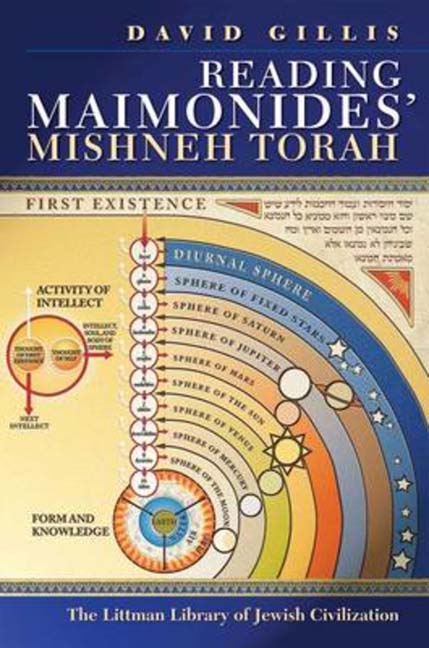Book contents
- Frontmatter
- Dedication
- Acknowledgements
- Contents
- List of Tables
- Note on Transliteration
- Note on Sources and Conventions
- Introduction: A Portrait of the Artist
- 1 In God’s Image
- 2 The ‘Great Thing’ and the ‘Small Thing’: Mishneh Torah as Microcosm
- 3 Emanation
- 4 Return
- 5 From Theory to History, via Midrash: A Commentary on ‘Laws of the Foundations of the Torah’, 6: 9 and 7: 3
- 6 Conclusion: Mishneh Torah as Parable
- Appendix I The Books and Sections of Mishneh Torah
- Appendix II The Philosophical Background
- Glossary
- Bibliography
- Index of Citations
- Index of Subjects
6 - Conclusion: Mishneh Torah as Parable
- Frontmatter
- Dedication
- Acknowledgements
- Contents
- List of Tables
- Note on Transliteration
- Note on Sources and Conventions
- Introduction: A Portrait of the Artist
- 1 In God’s Image
- 2 The ‘Great Thing’ and the ‘Small Thing’: Mishneh Torah as Microcosm
- 3 Emanation
- 4 Return
- 5 From Theory to History, via Midrash: A Commentary on ‘Laws of the Foundations of the Torah’, 6: 9 and 7: 3
- 6 Conclusion: Mishneh Torah as Parable
- Appendix I The Books and Sections of Mishneh Torah
- Appendix II The Philosophical Background
- Glossary
- Bibliography
- Index of Citations
- Index of Subjects
Summary
ONE OF THE PURPOSES of the Guide of the Perplexed, as stated in its introduction, is ‘the explanation of very obscure parables occurring in the books of the prophets, but not explicitly identified there as such’. A discussion on the interpretation of parables follows. It will be an appropriate way of pulling together the ideas on the interpretation of Mishneh torah put forward in this study to review them in the light of that discussion, on the suspicion that Maimonides’ remarks on reading Bible and Midrash may well tell us as much about his own methods of composition as they do about those texts. In other words, I shall treat Mishneh torah as a great parable that is not explicitly identified as such.
The Lost Language of the Commandments
A sub-theme of this study has been Maimonides’ manipulation of rabbinic sources. As it happens, his account of the function of parables is itself an example of such manipulation. Song of Songs Rabbah says of that biblical book: ‘This matter may be compared to the case of a king who lost gold in his house or pearls. Is it not through a wick that is worth a penny that he finds it again? So let a parable not be despised in your view, for it is through the parable that a person can master the words of the Torah.’ The message is that scholars should not regard studying the works of Solomon as beneath their dignity. Even a king uses a cheap taper to find something precious. Similarly, although Proverbs, Ecclesiastes, and Song of Songs have little value for halakhah, they should not be dismissed, because they serve as parables that cast light on the Torah.
Maimonides first paraphrases and then explains this parable about parables, one of a series on which he bases his discussion:
About this it has been said: Our Rabbis say: A man who loses a sela or a pearl in his house can find the pearl by lighting a taper worth an issar. In the same way this parable in itself is worth nothing, but by means of it you can understand the words of the Torah. This too is literally what they say.
- Type
- Chapter
- Information
- Reading Maimonides' Mishneh Torah , pp. 368 - 386Publisher: Liverpool University PressPrint publication year: 2015

